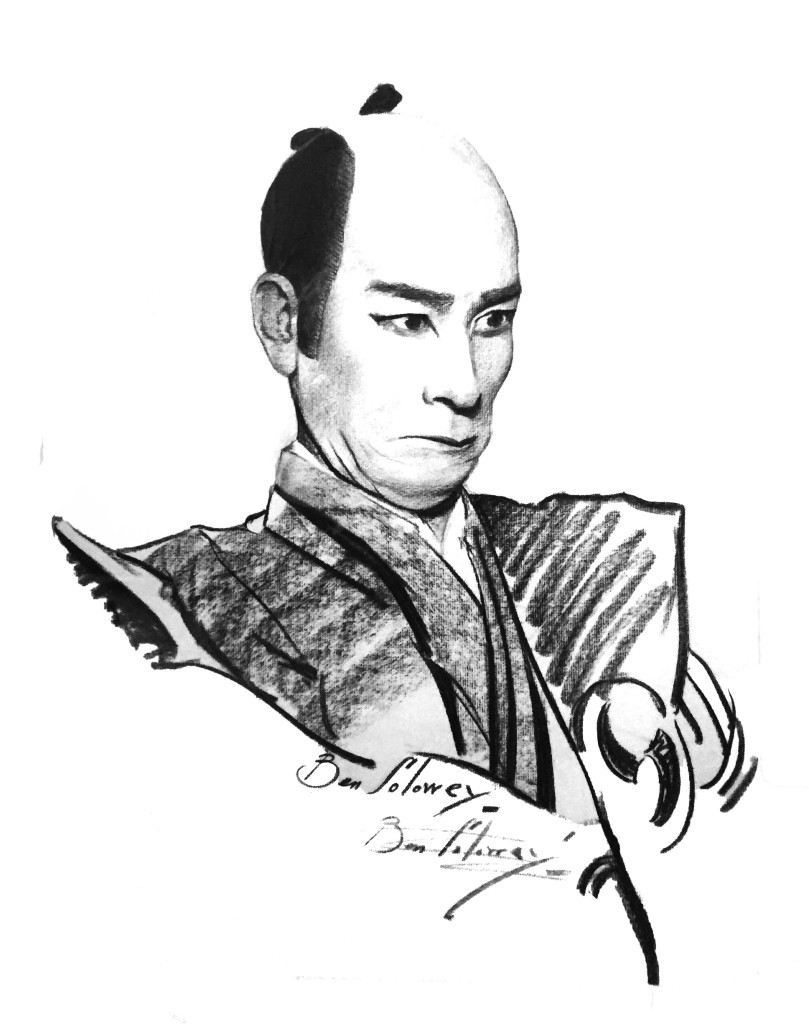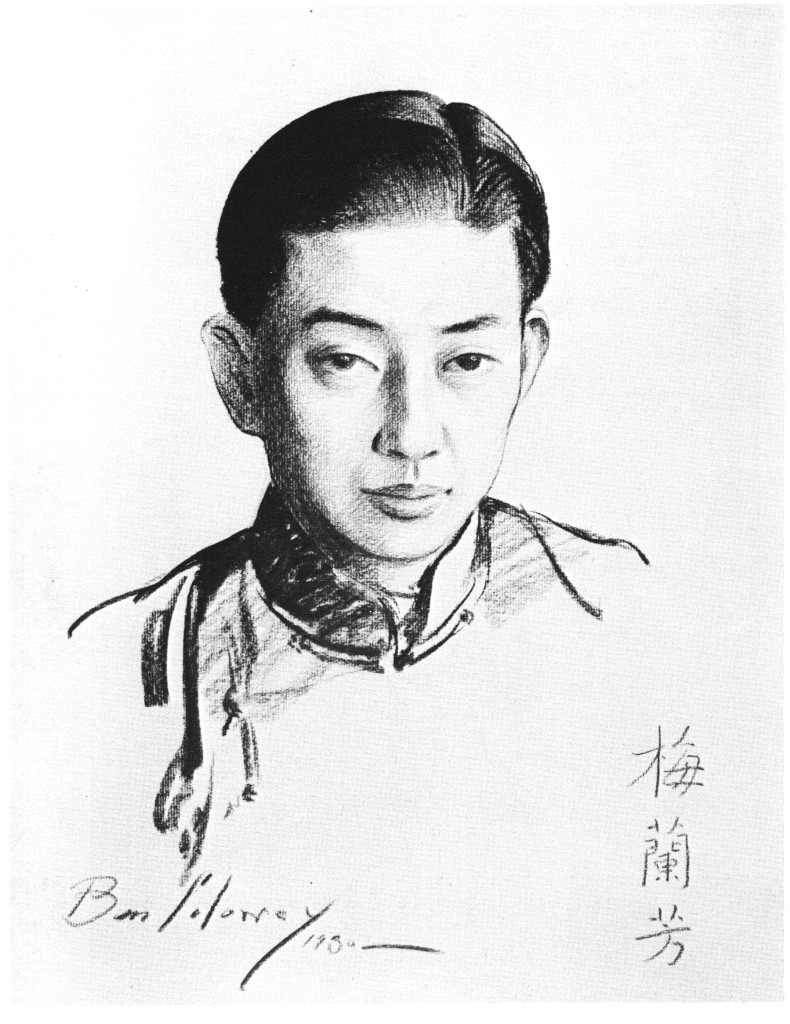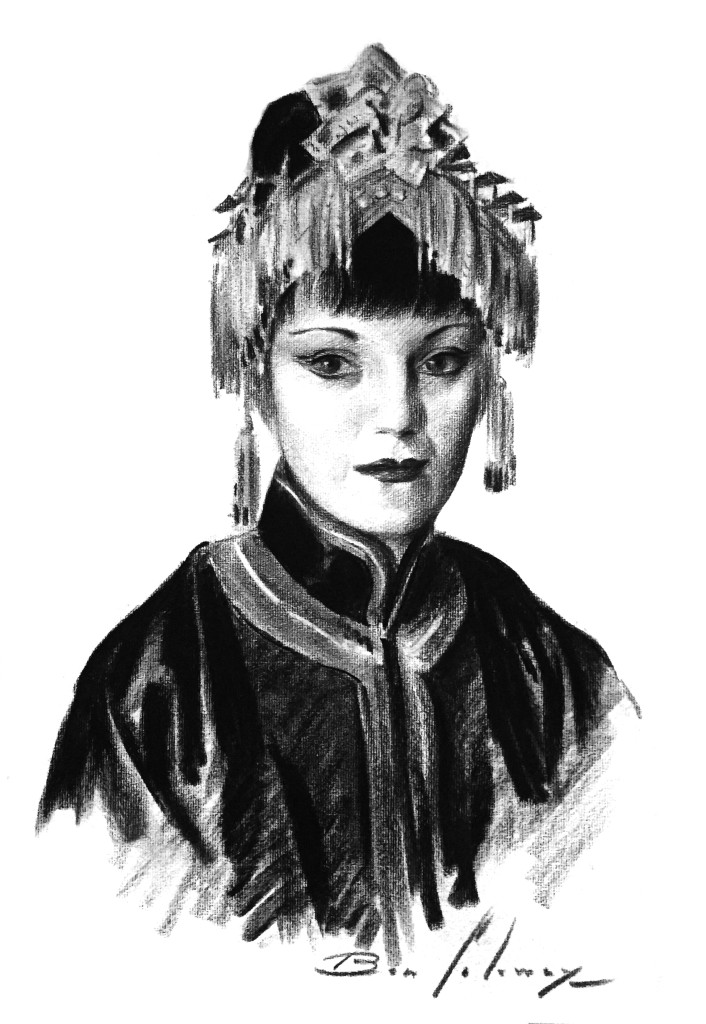Japonisme was the term used to describe the influence of Japanese art on fashion and aesthetics on Western culture. Like many artists of his generation, Ben was influenced by Japanese woodcuts and had several hanging in his home, and through the European interpretation of the woodcuts in the work of Impressionist artists such as Manet, Monet, Whistler, and Degas who synthesized a great deal of Japanese style into their art.
In Ben Solowey’s Paper Trails, you will also see how Ben personalized the flat colors and draughtsmanship of Japanese art in a selection of monotypes and woodcuts in the exhibition, as well as a handful of watercolors and drawings that have a sublime beauty and tranquility that can be traced to Asian art but is uniquely Ben Solowey’s.
Ben also captured the Asian influence on Broadway in the 1930s. On March 2, 1930, his portrait of Tokujiro Tsutsui, a Japanese actor-manager, filled a sizable portion of the front page of the Drama section of the New York Times. Tsutsui capitalized on the vogue for Japan by bringing his troupe of Kabuki-like performers to the Booth Theater for two weeks, performing his version of Kabuki masterworks with much more swordplay, which was his specialty. Tsutsui’s portrait will be on the wall in our new exhibition.
Ben’s portrait of Chinese actor, director and designer, Mei Lanfang is also well known as it was featured in the landmark 1966 exhibition of Ben’s Theater Portraits at Lincoln Center and included in the double portfolio set that was printed for that show. He was perhaps the most famous Peking Opera performer in modern history and was known for exclusively playing Qing yi roles, feminine characters (typically young or middle-aged women with gentle and refined dispositions) whose lines are delivered in song, and even the spoken parts are recited in rhythmic style. Mei Lanfang autographed his portrait in Chinese.
S.I. Hsiung was a Chinese playwright who came to London in 1933 to pursue postgraduate studies on Shakespeare. He decided to adapt a Chinese drama for English audiences as a way to create a link between the two cultures and to pay for his studies. Lady Precious Stream is set in the Tang dynasty, and depicts the devotion of a wife (the show’s title character) for her adventurous husband, of his prowess as a warrior, and his ultimate return.
Produced in London in 1934 with an all-English cast, it proved to be a hit, running for more than 1,000 performances. Morris Gest, well known for bringing the Moscow Art Theatre, Eleanor Duse, and Max Reinhardt to American stages in the 1920s, brought the production from London and recast American actors in the roles, with Helen Chandler in the lead role and Mei Lanfang designing the costumes. Chandler was a striking actress who is best remembered today as the love interest in the 1931 film of Dracula starring Bela Lugosi, and she split her time between Broadway and Hollywood. Chandler’s portrait, showing the actress in costume will have a starring role in our new exhibition opening October 3rd.













